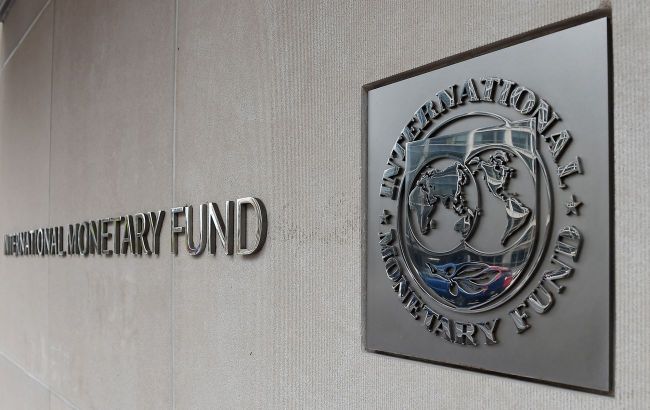IMF forecast: Ukraine's national debt to exceed 100% GDP in 2025
 Ukraine remains in the IMF program (photo: Getty Images)
Ukraine remains in the IMF program (photo: Getty Images)
In 2025, Ukraine's national debt will exceed 100% of its GDP for the first time. This year, the debt amount will be just 3-5% below this mark. Over the next few years, according to forecasts, the debt is expected to remain above 100% of GDP, according to the International Monetary Fund Memorandum.
According to the baseline scenario, Ukraine's national debt will amount to 95.6% of GDP this year and 106.6% next year. By 2026, the debt will increase by another percentage point compared to 2025, although it is projected to decrease by 5 percentage points to 102.6% in 2027.
However, under the negative scenario, this year's national debt will reach 97% of GDP and continue to rise in the following years. Specifically, in 2025, the debt load is expected to be 117.5% of GDP, 132.1% in 2026, and as high as 134.3% in 2027.
Among the main risks that could increase the debt burden, the IMF points to the duration and intensity of the war, including attacks on energy infrastructure, which reduce Ukraine's economic potential. Additionally, delayed or insufficient financial support from international partners is cited as a negative factor affecting the debt.
"Both scenarios are based on donors delivering on their financing commitments (including under the G7’s ERA initiative). Delays or shortfalls could make sub-optimal policies unavoidable (e.g., social spending cuts or domestic arrears), entailing substantial economic and social disruption," the document says.
The IMF noted that Ukraine completed a large-scale restructuring of its national debt in August this year, amounting to approximately $20.5 billion (or around $24 billion, including capitalized interest). This reduced Ukraine's national and guaranteed debt by $9 billion. Positive news also included the G7's assurance of providing $50 billion in multi-year financing for Ukraine.
The IMF emphasized that policy adjustments and deeper structural reforms must continue for many years. However, it added that some reforms over a prolonged period could contribute to social tension.
As a reminder, at the end of December 2021, Ukraine's national debt stood at 2.36 trillion UAH or $86.61 billion, representing about 45.2% of the country's GDP, which is more than twice as low as the projected debt this year under the baseline scenario. Last year, the debt increased by $30.6 billion compared to the first year of the war, reaching $161.5 billion by the end of 2023, or 90.4% of GDP.
Budget and balance deficit to increase
According to the baseline scenario, the balance of payments deficit will reach $14.9 billion (8.1% of GDP) by the end of this year. IMF experts note that reduced harvests and high imports may be compensated by funds saved from the restructuring of Eurobonds.
Under the negative scenario, the balance of payments deficit will be $19.6 billion, or 10.7% of GDP.
Next year, the current account deficit is expected to increase to $27.1 billion (14.3% of GDP), driven by a persistent need for imports, a labor shortage in export-oriented industries, and insufficient grant support.
Power outages caused by ongoing Russian attacks on Ukraine's energy infrastructure further exacerbate the economic situation. Additionally, the mobilization of citizens and significant internal displacement have impacted domestic production. According to the IMF, 10.3 million people remain displaced either within the country or abroad.
Despite these challenges, the unemployment rate is expected to decrease by over 5% in 2024 compared to 2023, to 14.2%. The IMF also forecasts further declines in unemployment to 10.4% in 2026 and 9.4% in 2027, assuming the war ends by late 2025. For reference, the unemployment rate in 2021 was 9.8%.
In the post-war period, the IMF projects a cumulative real GDP loss of 2% by 2027 (and 2.7% by 2033). However, if the war ends by 2026, economic growth will be supported by investments stemming from reforms on the path to EU integration, as well as increased production capacity and the beginning of reconstruction.
Significant expenditures and growing foreign reserves
The draft budget for 2025 maintains high levels of expenditure. The budget, submitted to parliament in September, allocates total expenditures of 59% of GDP. As in this year, the budget remains primarily defense-oriented, with other categories tightly prioritized.
The total state budget deficit, excluding grants, is forecasted at 1.71 trillion UAH, or about 20% of GDP. To keep the deficit under control, the government has frozen the subsistence minimum, the minimum wage, and wages in the public sector.
Though the deficit will remain large next year, it is expected to be mostly covered by external donor support. Thanks to this external support, the country's foreign exchange reserves are expected to rise to $42.6 billion by the end of this year. As of August, reserves stood at $37.2 billion. However, in a negative scenario, reserves could fall to $33 billion.
Next year, under the baseline scenario, gross reserves will grow to $44.9 billion, while under the negative forecast, reserves will total $35.2 billion.
Experts from the International Monetary Fund have updated their forecast on the duration of Russia's war against Ukraine, pushing the end of intense fighting back by a year.
The IMF also updated its negative scenario for Ukraine in the event of a more intense war lasting until mid-2026.
On October 18, the IMF's Executive Board approved the fifth review of the EFF program. This will allow Ukraine to receive a new tranche of $1.1 billion soon.
Ukraine's agreement with the IMF on a $15.6 billion EFF program was approved in March 2023.
Under this program, Ukraine has already received five tranches totaling around $7.6 billion, including $900 million in March and the latest tranche of $2.2 billion in July.

